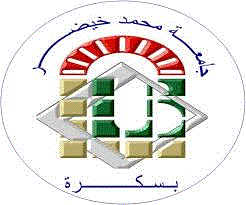| Titre : | Impact de la morphologie du bâtiment sur la dispersion des polluants atmosphériques : cas d’étude ville d’Annaba |
| Auteurs : | Meriem Abdeldjaouad, Auteur ; Noureddine Zemmouri, Directeur de thèse |
| Support: | Mémoire magistere |
| Editeur : | Biskra [Algerie] : Université Mohamed Khider, 2014 |
| Langues: | Français |
| Mots-clés: | Morphologie urbaine ; Microclimat urbain ; Pollution ; Dispersion ; Concentration ; Modélisation numérique ; Simulation ; CFD Urban morphology ; Urban microclimate ; Numerical modeling ; CFD |
| Résumé : |
Cette recherche s'inscrit dans l'univers des investigations portant sur la diversité environnementale en milieux urbains. Elle vise à étudier et analyser le rapport entre la morphologie urbaine, les microclimats et la dispersion de la pollution atmosphérique dans les espaces publics extérieurs par la simulation. En milieu urbain, les paramètres microclimatiques tels que la température, l'écoulement de l'air, peuvent varier en fonction de l'espace et du temps. Ces variation générés par la morphologie urbaine affectent d'une manière significative la répartition des polluants dans l'air et engendrent ainsi des nuisances urbaines. La compréhension des interactions de ces différents paramètres nécessite une approche de nature pluridisciplinaire, Les outils d’évaluation de la dispersion de la pollution atmosphériques autour des bâtiments que nous avons élaborés à l’aide de nos simulations sous le code Fluent du model CFD eulérien permettent de quantifier et de comprendre les effets type dus au vent et leurs impacts sur la pollution atmosphérique. la concentration des polluants a la micro échelle dans deux quartiers choisis situés a l’ouest de la ville, le quartier des orangers et le quartier Belaid Belgacem conçus a partir des années 70, qui sont connus par l’étalement urbain accru, ont fait l’objet de notre étude a fin de mesurer leurs effets sur la caractérisation microclimatique d’une aire urbaine ainsi que leurs impact sur la concentration et les directions des courants de polluants dans l’atmosphère. l’application de l’analyse comparative au deux quartiers, a permis d’observer qu’au niveau du quartier Belaid Belgacem la concentration des polluants et plus élevé a cause du ratio H/L qui crée le phénomène de la rue canyon, et la hauteur des bâtiments h The spatial form, or morphology, of urban areas may significantly affect the anthropogenic production of air pollutants. This dissertation explores the relationships between air quality and urban form. In urban areas, the microclimate parameters such as temperature, air flow, can vary depending on space and time. These changes generated by urban morphology affect significantly the distribution of pollutants in the air and generate urban nuisances. Understanding the interactions of these parameters requires a multidisciplinary approach, the evaluation of the dispersion of atmospheric pollution around buildings we have developed tools using our simulations with the Fluent CFD Eulerian model used to quantify and understand such effects due to wind and their impact on air pollution. the concentration of pollutants in the micro scale in two selected neighborhoods located to the west of the city, the district orange and Belaid neighborhood Belgacem designed from the 70s, which are known by the increased urban sprawl, have been the purpose of our study to measure their effects on the microclimate characterization of an urban area and their impact on concentration and current directions of pollutants into the atmosphere . the application of the comparison to two urban fragments, has observed that the concentration of pollutants in the area Belaid Belgacem is higher because ratio H / L creates the phenomenon of street canyon, and building height |
Exemplaires (1)
| Cote | Support | Localisation | Disponibilité | Emplacement |
|---|---|---|---|---|
| TH/1664 | Mémoire magistere | Bibliothèque centrale El Allia | Exclu du prêt | Salle de consultation |
Consulter en ligne (1)
Consulter en ligne URL |



